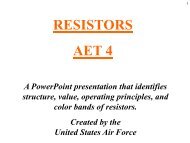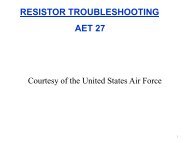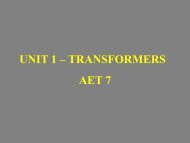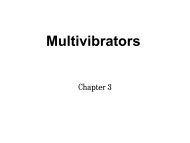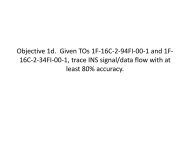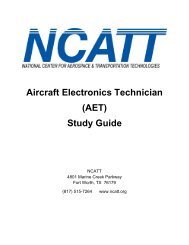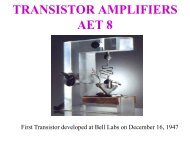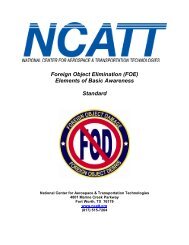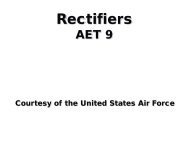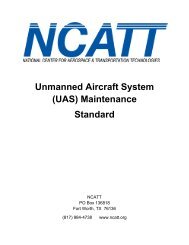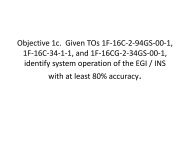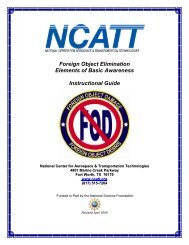Aircraft Electronics Technician AET - NCATT
Aircraft Electronics Technician AET - NCATT
Aircraft Electronics Technician AET - NCATT
You also want an ePaper? Increase the reach of your titles
YUMPU automatically turns print PDFs into web optimized ePapers that Google loves.
<strong>NCATT</strong> <strong>Aircraft</strong> <strong>Electronics</strong> <strong>Technician</strong> (<strong>AET</strong>) Study Guide<br />
2. Alternating Current (AC) Basic Terms<br />
<strong>NCATT</strong> Level B<br />
Outcome: A successful education or training outcome for this task/subject will produce an<br />
individual who knows and can identify the relationship of basic facts and state general principles<br />
about “Alternating Current”. The following is a minimum list of terms associated with this<br />
subject.<br />
• Alternating Current<br />
o Flow of electrons that continuously changes its value in magnitude and<br />
periodically reverses direction (sine-wave)<br />
o Alternating current is much easier to produce in large quantities as compared to<br />
DC. The time required for one cycle of AC to occur is called the period<br />
• Apparent Power<br />
o Product of effective voltage and effective current which is expressed in Volt<br />
Amps (VA) rather than Watts (W) without reference to phase shift, if any,<br />
between voltage and current<br />
• Capacitive Reactance (XC)<br />
o Opposition to current flow in a circuit<br />
o The affect that capacitance has on an AC circuit is termed capacitive reactance<br />
o In an AC circuit capacitance causes current to lead voltage in phase (ICE)<br />
o Values are given in ohms<br />
• Delta Wound<br />
o Windings arranged in the shape of a triangle<br />
o For example, on a three- phase generator, motor, or transformer, two of the phase<br />
windings are in a series, across the third (phase) winding<br />
• Effective Voltage<br />
o Amount of AC that produces the same amount of heat as a corresponding value of<br />
DC<br />
o The effective voltage of AC is referred to as the RMS value<br />
o Effective value is always less than the peak value of AC<br />
o Unless otherwise specified, all values of AC are considered effective values<br />
• Frequency<br />
o Number of cycles of AC completed in one second<br />
o Frequency is expressed in hertz (Hz), 1 Hz = 1 cycle of AC/Second<br />
o The frequency of most AC used in aircraft applications is 400 Hz<br />
• Impedance (Z)<br />
o Electrical characteristic of a conductor. Impedance is the total opposition to the<br />
flow of AC in an electrical circuit (resistance, capacitance, and inductance)<br />
o Values are given in ohms<br />
• Inductive Reactance (XL)<br />
o Opposition to current flow in a circuit<br />
Copyright © 2012 by the National Center for Aerospace & Transportation Technologies. All rights reserved. Individuals may<br />
download, print, and make copies of this document for their own personal use. Commercial use prohibited.<br />
Page 7 of 60



